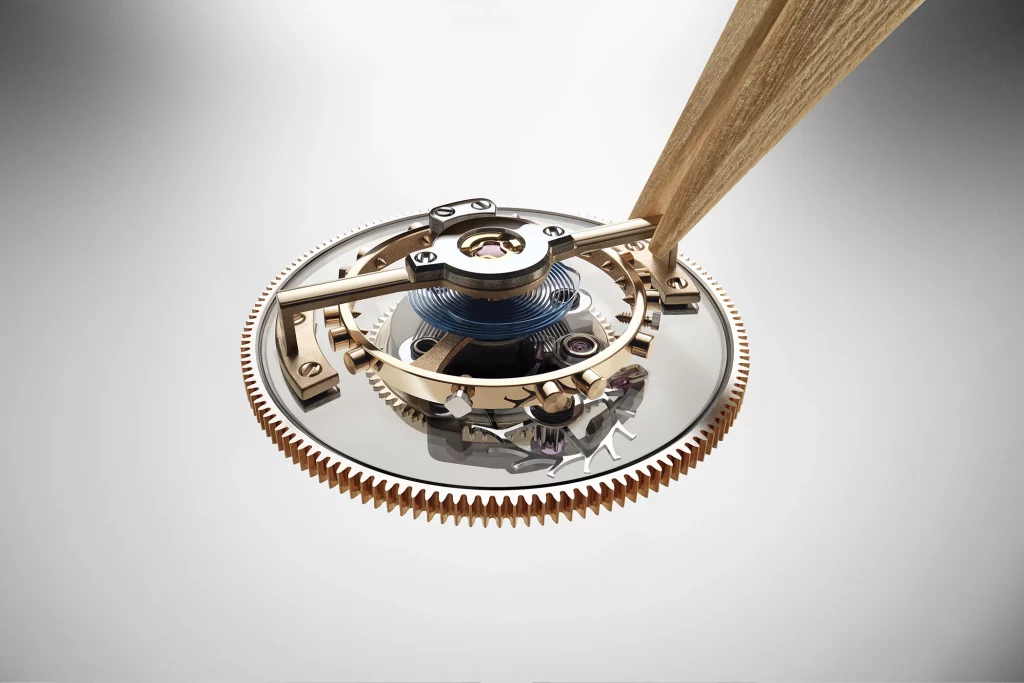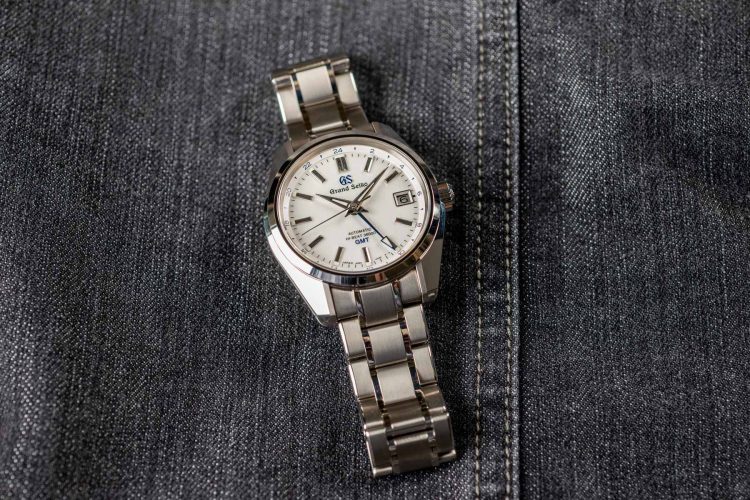In an age when digital dials and minimalist aesthetics dominate the smartwatch market, there remains a quiet reverence for traditional craftsmanship that transcends trends. Among these revered techniques, none commands more awe or technical intrigue than guilloché — the intricate engine-turning of metal into mesmerizing patterns. And when it comes to guilloché, no name resonates with as much legacy and artistry as Breguet. For over two centuries, the maison has upheld this craft as a signature — not just a decorative flourish, but a declaration of horological identity.
Breguet’s guilloché dials are more than exquisite to look at; they embody the convergence of technology and art, past and present, mechanical precision and human emotion. This article explores the origins of guilloché, how Breguet has preserved and evolved the technique, and why this form of dial decoration remains central to the brand’s image and philosophy in 2025 and beyond.
The Origins and Aesthetic of Guilloché: Art by Machine, Guided by Hand
Guilloché, sometimes referred to as “engine turning,” is the process of engraving repetitive patterns onto a surface with high precision, typically using a manually operated lathe called a rose engine or straight-line engine. Originating in the 16th century and flourishing in the decorative arts of the 18th and 19th centuries, it was initially applied to fine jewelry, snuff boxes, and musical instruments before finding its way into horology.
The technique involves placing a flat metal dial on the machine, then guiding it in a controlled motion under a sharp cutting tool. This motion creates a continuous, precise, and often hypnotic geometric pattern — each line carved with a depth and crispness that catches light differently depending on the viewing angle. Despite its mechanical origins, guilloché is far from automated. It requires a skilled artisan to adjust pressure, angle, rhythm, and sequence — a mastery that takes years to acquire.
From basketweave to clous de Paris, barleycorn to sunburst motifs, guilloché is never random. Each pattern conveys something specific: structure, dynamism, serenity, or power. In Breguet’s case, the technique is elevated beyond mere embellishment. It becomes a signature language, recognizable across collections and generations, lending unity to designs that span centuries.
Breguet’s Dial Language: A Signature in Steel and Silver
Abraham-Louis Breguet, the founder of the brand, first began incorporating guilloché into his watches around 1786. At the time, it served both a practical and aesthetic function. Textured surfaces resisted tarnish and smudges better than smooth ones, while also increasing legibility by reducing glare — essential for early pocket watches. But even more than that, guilloché reflected Breguet’s philosophical vision of timekeeping: precision, beauty, and clarity, harmoniously fused.
Breguet was among the first to use multiple guilloché patterns on a single dial to demarcate different sections — hours, minutes, power reserve, or calendar — creating an elegant form of visual organization long before modern UX design existed. Today, his influence is still visible in the brand’s contemporary watches:
- The Classique 7137 employs no fewer than three different guilloché patterns: basketweave for the moonphase, damier for the power reserve, and clous de Paris for the main dial.
- The Tradition series blends historical movement layouts with finely engraved dials, using guilloché as a subtle contrast to exposed mechanical elements.
- Limited editions such as the Extra-Plat Squelette reimagine classic patterns with skeletonized designs and transparent enamel overlays, showing that guilloché can evolve while staying rooted in heritage.
In each case, Breguet treats the dial not just as a canvas but as a crafted object in its own right — one that breathes, refracts, and invites touch and light interaction.

Balancing Handcraft and Modernity: Where Tradition Meets Technology
In a world where laser-engraving machines can replicate guilloché-like textures in seconds, one might wonder why Breguet continues to rely on manually operated rose engines, some of which are over 100 years old. The answer lies in fidelity — not just to heritage, but to human nuance.
While CNC or laser tools can etch a similar pattern, they lack the organic variation and tactile depth of true guilloché. The grooves produced by hand-guided tools are deeper, sharper, and respond more vividly to light. Moreover, only a human artisan can intuitively adjust the cutting based on the softness of the metal, the room’s humidity, or the tiniest imperfection in the blank dial — factors no algorithm can yet replicate.
Still, Breguet is not frozen in the past. The brand incorporates advanced metallurgy, CAD modeling, and computer-guided prototyping into its broader manufacturing. Yet it draws a deliberate boundary when it comes to certain decorative elements. Guilloché, along with hand-engraving and enameling, is considered sacred ground — a defining ritual in the creation of a Breguet watch.
This fusion of manual and modern, old and new, defines Breguet’s place in the 21st century: not a nostalgic brand, but a timeless one. It proves that innovation doesn’t always mean disruption. Sometimes it means deepening a commitment to craft while allowing the rest of the process to evolve.
Preserving Brand Identity Through Decorative Technique
In today’s luxury market, brand differentiation often hinges on movements, materials, or celebrity ambassadors. But Breguet stands apart by embedding its identity in craft. The guilloché dial is not an afterthought; it is a mission statement.
Collectors can spot a Breguet from across the room by the silvery shimmer of its engine-turned dial and the blued pomme hands that glide over it. That recognition isn’t accidental. By insisting on in-house guilloché, Breguet ensures that each dial is both technically consistent and emotionally distinctive. The small inconsistencies — a hairline deviation here, a subtle depth variation there — are what make each piece personal.
The decision to maintain guilloché in-house also speaks volumes about brand independence. In an era when many luxury groups outsource dial production, Breguet retains full control over its supply chain, quality, and artistic direction. This not only protects its heritage but ensures future innovation can occur without dilution.
For collectors and connoisseurs, owning a guilloché Breguet means owning a part of this story — a legacy of patience, skill, and the refusal to compromise.
The Emotional Resonance of Guilloché in a Digital World
Perhaps what makes Breguet’s guilloché so relevant today is its emotional counterpoint to modern life. In a world of instant gratification, machine learning, and sleek minimalism, the textured complexity of a guilloché dial invites pause. It’s analog in the truest sense — not anti-technology, but defiantly human.
Running a fingertip across the dial’s tiny ridges evokes a sense of connection to the artisan who created it. Watching the pattern shift under the light feels like observing a living surface. No two patterns are perfectly alike, just as no two moments in time are.
This is what elevates guilloché from decoration to expression. It doesn’t just tell the time — it gives time a texture, a memory, a personality. It reminds us that even in the most technical corners of watchmaking, poetry has a place.
Conclusion
Breguet’s guilloché dials are more than visual signatures — they are metaphors for the brand’s approach to time itself: precise yet poetic, mechanical yet emotional, rooted yet forward-looking. In preserving this art form through the hands of skilled artisans and the heartbeat of historic machines, Breguet doesn’t just make watches. It crafts legacy, one groove at a time.
As technology accelerates around us, the value of such tactile, human-centric artistry only deepens. Guilloché isn’t just surviving in 2025 — it’s thriving as a symbol of what luxury truly means: time, care, and the refusal to cut corners when beauty is on the line.





































